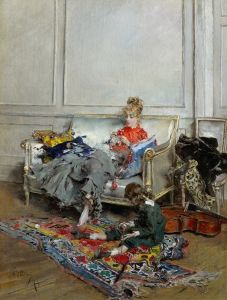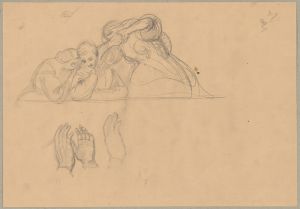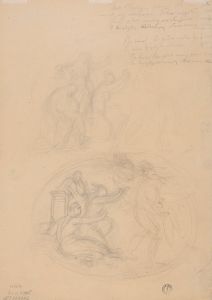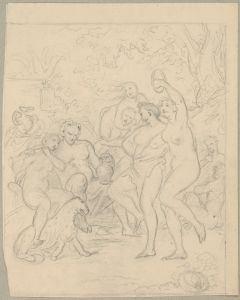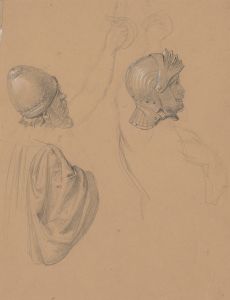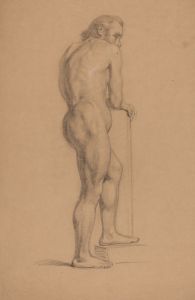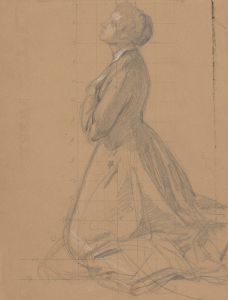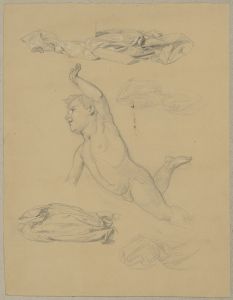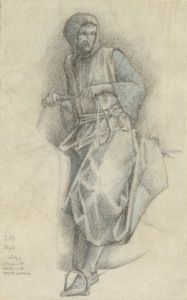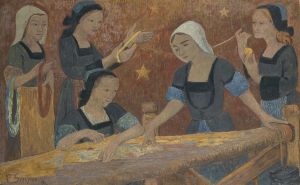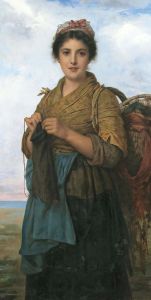
Sketches of figures in folk costumes of Kuyavia
A hand-painted replica of Józef Simmler’s masterpiece Sketches of figures in folk costumes of Kuyavia, meticulously crafted by professional artists to capture the true essence of the original. Each piece is created with museum-quality canvas and rare mineral pigments, carefully painted by experienced artists with delicate brushstrokes and rich, layered colors to perfectly recreate the texture of the original artwork. Unlike machine-printed reproductions, this hand-painted version brings the painting to life, infused with the artist’s emotions and skill in every stroke. Whether for personal collection or home decoration, it instantly elevates the artistic atmosphere of any space.
Józef Simmler, a notable Polish painter of the 19th century, is recognized for his contributions to historical and genre painting. One of his works, "Sketches of Figures in Folk Costumes of Kuyavia," reflects his interest in capturing the cultural and historical essence of Poland through art. This particular piece focuses on the traditional attire of the Kuyavia region, an area in north-central Poland known for its rich folklore and distinctive cultural heritage.
Simmler was born on March 14, 1823, in Warsaw, which was then part of the Congress Poland under the Russian Empire. He studied art in Dresden, Munich, and Paris, where he was influenced by the European academic style. His education and exposure to different art movements equipped him with the skills to depict historical and cultural subjects with precision and depth.
"Sketches of Figures in Folk Costumes of Kuyavia" is a testament to Simmler's dedication to documenting Polish culture. The Kuyavia region, with its unique traditions and customs, provided a rich source of inspiration for the artist. Folk costumes from this area are characterized by their vibrant colors, intricate embroidery, and distinctive patterns, which are often reflective of the region's agricultural lifestyle and historical influences.
Simmler's sketches likely served as studies for larger compositions or as standalone works that celebrated the diversity of Polish regional costumes. These sketches would have been executed with attention to detail, capturing the textures and designs of the fabrics, as well as the posture and demeanor of the figures wearing them. Such works were important during a time when Poland was partitioned and under foreign rule, as they helped preserve and promote Polish cultural identity.
Throughout his career, Simmler was known for his ability to blend realism with a sense of romanticism, which is evident in his portrayal of historical and cultural themes. His works often conveyed a sense of national pride and nostalgia, resonating with the Polish public who were eager to maintain their cultural heritage amidst political turmoil.
Simmler's contribution to Polish art extends beyond his paintings; he was also involved in the artistic community in Warsaw, participating in exhibitions and contributing to the development of art institutions. His legacy is marked by his commitment to portraying Polish history and culture with authenticity and artistic excellence.
While specific details about "Sketches of Figures in Folk Costumes of Kuyavia" may be limited, the work fits within the broader context of Simmler's oeuvre, which consistently aimed to highlight the beauty and complexity of Polish life. His art remains an important part of Poland's cultural history, offering insights into the country's past and the enduring significance of its regional traditions.





